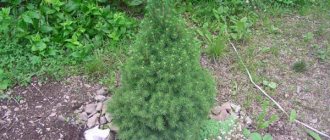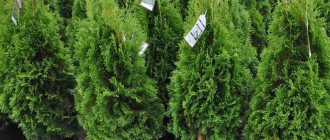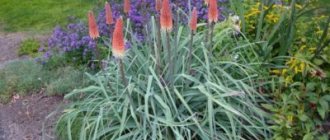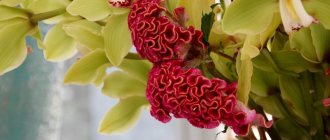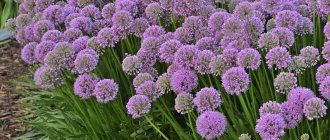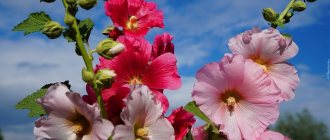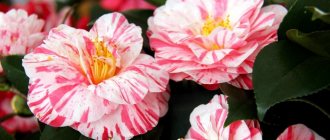Surfinia is an artificially bred species of ampelous petunias that are resistant to adverse weather conditions. These flowers were created by Japanese breeders in the second half of the 20th century, and since then have gained great popularity among lovers of ornamental plants in different countries. Numerous bells, which abundantly cover the surfinia bushes throughout the summer season, attract attention with their beauty and tenderness. They are used to decorate the courtyards and gardens of private houses, restaurant verandas, city parks and public gardens. However, in cold seasons, flowers need home care. Read below about how to preserve surfinia until spring, as well as how to grow new seedlings.
Surfinia varieties
There are more than 20 species of this crop and many varieties of surfinia.
Ampelnaya
Surfinia Ampelnaya perennial
Ampelnaya is a perennial plant grown in gardens. It spends the winter period in basements, without leaves (they are cut off before sending the surfinia to rest); in early spring, buds and foliage form on it.
Yellow
Surfinia Yellow
Yellow is the first selective variety of an ampelous species, characterized by early and long flowering. The number of buds is numerous, the color ranges from light to dark yellow.
Burgundy
Surfinia Burgundy
Burgundy is a branched plant on which wine-colored flowers appear in large numbers, which disappear only with frost.
Double Purple
Surfinia Double Purple
A fast-growing variety, 20 cm tall, characterized by its resistance to excess moisture. There are many flowers on the bush, the color is bright purple;
Hot Pink
Surfinia Hot Pink
Hot Pink - has large inflorescences in two shades (pink background with bright crimson stripes);
Table White
Surfinia Table White
Table White - flowering lasts more than 5 months, the flowers are similar to bells and have a snow-white hue;
Red
Surfinia Red
Red - small bushes in the shape of a ball, characterized by long flowering, the buds have a bright red hue. The species is capricious and demanding in maintaining optimal growing conditions.
Varietal traits
Petunia surfinia belongs to numerous hybrids of bush petunia, in contrast to which it has long stems. Varietal traits allow the gardener to immediately distinguish the hanging plant from other species. The lateral erect stems of Surfinia fall down during the growth and appearance of flowers, creating a colorful waterfall.
Breeders have long tried to create hybrids of petunias through crossbreeding that would be resistant to pests and diseases. The result exceeded our wildest expectations.
The best representatives of Surfinia are:
- Salmon corduroy. Delicate pink or bright purple flowers grow profusely on shoots reaching a length of 80 cm.
- Burgundy. The deep maroon color is associated with fine wine. Hence the original name of the hybrid.
- Deep Purple. The lush bushes of the plant are decorated with many purple double flowers.
- Table White. Snow-white bell flowers delight the eye from spring until the first severe frosts.
- Parple corduroy. The hybrid has the longest branches - 1 m. The flower petals are purple in color, the core is dark.
Sowing surfinia seeds
Most often, surfinia is grown at home from seeds. For these purposes, it is necessary to select high-quality seed, paying special attention to the shelf life and integrity of the packaging.
Surfinia is sown in early spring in the following sequence:
- Preparing the container – any containers or small pots will do.
- Preparation of the substrate - peat tablets, or sand with peat. The soil for seedlings must be breathable.
- Arrangement of a drainage system made of foam balls, pebbles or expanded clay.
Surfinia growing from seeds
- Due to its small size, planting material should not be buried in the ground. Several seeds are placed on moist soil and covered with film.
- The pots are opened daily for ventilation.
- Watering is carried out from a spray bottle as the soil dries out (it should remain slightly moist).
- The pots should be installed in a designated place where the air temperature reaches at least 20 degrees.
- The first shoots should appear in 15-20 days. At this time, the roots must be sprinkled with fried sand to protect them from rotting and strengthen them, and the protective film must be removed.
- Transplanting one specimen into pots is done when the plant has 2 leaves.
Breeding methods
The easiest way to propagate surfinia is vegetatively. To do this, in the fall, the apical stalk 10 cm long is cut off from an adult plant using pruning shears. All leaves must be removed from each specimen, except for the top pair.
To guarantee the survival of fastidious plants, it is recommended to immerse the cuttings for some time in a solution with phytohormones. This will allow the roots to better form their system.
Then the cuttings are planted in moist soil, it is better if it is purchased, intended for indoor plants. Containers with cuttings should be covered with a transparent film and moved to a warm place, preferably a heated greenhouse or to a cool veranda or warm balcony.
This method of breeding allows you to become the owner of a large blooming greenhouse of petunias in the spring.
An ampelous plant can also be grown from seeds, but this will take more time and patience. With this method, only high-quality purchased material is used. Domestic seeds collected from an adult plant have poor germination and, with intensive growth, lose varietal characteristics.
Flower shops offer a wide variety of surfinia seeds, and the photo on the packaging allows you to choose the desired color.
In early spring, petunia is planted as seedlings. Soil preparation consists of adding leaf humus, loosening and good moisture. Small flower seeds should be mixed with sand to facilitate sowing.
The seed material is evenly distributed on the soil surface and additionally moistened with a spray bottle. There is no need to cover the seeds with soil; they need to be covered with film and maintained at a temperature of 21-23ᵒC. Petunias are moisture-loving plants, so watering should be done regularly. After about 7-10 days, the first shoots will appear; for hardening, the film is removed from them once a day.
Surfinia cuttings
Reproduction of surfinia by cuttings
Petunia surfinia can also be propagated by cuttings. To do this you need:
- At the beginning of autumn you need to cut off a large specimen of the plant.
- Plant it in a fertile substrate.
- Cover with a jar or film to create the required level of humidity and heat.
- When the soil dries out, it must be moistened, but moisture should not be retained.
- The greenhouse should remain in place until new leaves form on the plant.
- A viable bush can be observed already in mid-spring, at which time it is transplanted to the place where it will grow on a permanent basis.
Seedling care
Growing surfinia seedlings
Since surfinia loves light, seedlings need good lighting. If necessary, you need to create artificial lighting so that the adult plant can subsequently bloom profusely.
When leaves appear on young seedlings, it is important to pinch them in a timely manner, removing the top pair of leaves. This procedure will stimulate the growth of lateral layers so that the bush will be lush and branchy in the future.
Planting in open ground is carried out at the end of spring. To do this, it is prepared, which consists of watering and fertilizing. A complex fertilizer must contain all the necessary substances, but potassium should be the predominant component. Fertilizer for seedlings is diluted in a weaker concentration than for adult plants, gradually bringing the indicators to those indicated on the package. Fertilizers must be applied every 2 weeks.
Important . You can create a colorful flowerbed in which all the surfinia flowers will highlight each other by alternating shades or combining colors.
How to distinguish from petunia?
Beautiful annual plants of an ampelous type include petunia and surfinia. What is the difference between these beauties? Differences were noticed in the following ways:
- At the seedling stage, flowers are distinguished by their ability to branch and grow. Even at the sprout level, it was noticed that petunia seedlings are much smaller than surfinia seedlings, although they are the same age. Petunias have a meager number of side shoots compared to surfinia. Petunia shoots tend upwards. Surfinia has many shoots; in pots, at first they grow to the sides and resemble a giant colorful spider, then they hang down in garlands.
- Here’s another difference: petunia and surfinia, being adult plants, form their bush differently. To grow a luxurious crown of petunia flowers, a person should come to the rescue. It is necessary to pinch the shoots that have grown on the sides, thus activating branching. First, the plant must green up, and only then bloom. This is the only way and no other way to get a beautiful green petunia cap decorated with flowers. With surfinia things are simpler. She herself will direct her shoots, and the space allotted to her will be filled with flowers and their aroma.
- Although the relatives are close, their method of reproduction is far from each other. Petunia can be propagated by cuttings and produces seeds. Surfinia is “greedy” for seeds, so the vegetative method is used for propagation. It is enough to simply cut the cutting from the bush and replant it in the ground. In order for the cuttings to take root, this must be done quickly.
- What is the difference between petunia and surfinia? They can be compared by the bushes and flowers themselves. Petunia is a small plant that usually grows in boxes on balconies or on lawns. Surfinia has more lush and rich flowering; it is planted in large baskets and outdoor flowerpots, at a good distance from each other.
Despite the exquisite beauty of surfinia, petunia should not be discounted. Breeders have developed new mini-varieties that will delight the eye and decorate the garden plot with their blooms. The species with amber-colored flowers is in demand. Unlike simple petunia, it will compete even with surfinia.
In addition to the indicated signs, it will not be possible to find the difference between surfinia and petunia, since it no longer exists. They have similar flower shapes, sizes and color palettes.
Conditions for surfinia
Surfinia ampelous can grow fruitfully and delight its owners with long-lasting flowering only if there is a constant supply of sunlight. It is equally important to protect the plant from the influence of winds so that the shoots do not get confused with each other and do not break.
Attention! Raindrops falling on the inflorescences can also harm surfinia. Therefore, it is necessary to create protection from precipitation.
Location and lighting
The Petuniaceae family, including Surfinia, are demanding of sunlight. Seedlings deprived of lighting will have weak sprouts and a small number of flower ovaries. The best option is 10-12 hours of daylight.
In a flowerbed, the plant can thrive on sunny sides with minimal shading (east, south, southeast, southwest). If you plant the plant in a darker place, this may affect the quality and duration of flowering.
The soil
The composition of the soil plays an important role in growing and caring for surfinia. If seedlings grow on peat tablets, then an adult plant needs more fertile soil. Surfinia will develop productively on loam with an acidity of 5-6 pH, as well as on sandy substrates. The main condition for ideal cultivation is space and fertile soil with all the necessary microelements and vitamins.
Silver Plantarium-2016
12 new products from the floriculture market received silver.
Sedge Everlight
The new Ehimen sedge variety Everlite is the most compact in the Evercolor series. This beautiful plant is ideal for growing in pots and containers, but also thrives outdoors. This sedge is frost-resistant and tolerates temperatures down to –25°C.
The plant breeder is Irish.
Deytsia Yuki Cherry Blossom
Breeders call the action of Yuki Cherry Blossom a real “floriculture breakthrough”. It is surprisingly winter-hardy, unpretentious and at the same time fantastically beautiful.
At just 60cm tall, this small shrub is perfect for low borders and also for growing in containers on the patio.
Deytsia Yuki Cherry Blossom is the result of the work of the Dutch.
Foxglove Takfoplgo
Foxglove with the unpronounceable name Takfoplgo captivates with the juicy, catchy golden-plum color of the inflorescences.
This flower is a hybrid of Foxglove purpurea and Foxglove Canarian. The variety was bred by the Dutch breeder Maarten van der Sar.
Geranium Jolly Jewel
Ash geranium Jolly Jewel - a series of varieties from the Netherlands.
This flower is winter-hardy, not afraid of diseases and pests, grows quickly and delights with flowering from April to September. The height of the bushes is 10-12 cm.
The series includes varieties with different flower colors: hot pink Jolly Jewel Hot Pink, purple Jolly Jewel Purple, purple Jolly Jewel Night, salmon Jolly Jewel Salmon Salmon), fuchsia with a silver spot at the base Jolly Jewel Silver.
Hebe Discovery
Hebe variety Discovery is a miniature ornamental shrub of the Plantain family. Its maximum height reaches 20 cm.
This plant is heat-loving and does not tolerate frost, so in cool climates it is grown mainly in containers. The purple flowers make Discovery Hebe a desirable plant for patios and balconies.
Clematis Taiga
Perhaps it would not be a strong exaggeration to call clematis Taiga the most spectacular new product of the exhibition. The flowers of this ornamental vine have a lemon-purple color quite familiar to their species, but their shape is striking. At first glance, I can’t believe that this bizarre double inflorescence is real.
Clematis Taiga blooms from June to September, is not afraid of partial shade, is frost-resistant, and grows up to 2-3 m in length.
Heuchera Rex Red
Heuchera Rex Red is the result of the work of Polish breeders.
Plants of the new variety have attractive red-purple foliage and soft pink flowers. The strength of this heuchera is its long flowering throughout the summer.
Hibiscus Magenta Chiffon
Magenta Chiffon is the youngest variety of Syrian hibiscus, which was introduced just a few weeks ago. We have already talked about the unusual history of the appearance of a series of hibiscus called Chiffon.
Read more about the characteristics of this English cultivar and its “biography” in our article: The youngest variety of hibiscus is Magenta Chiffon.
Perovskia Denim-en-Lays
Perovskia swanfolia, or Russian sage, cultivar Denim'n'Lace is a tall, spreading shrub with lilac-blue flowers. It was bred by German breeders from Cultivaris GmbH.
Hydrangea Pastel Green
Hydrangea paniculata variety Pastel Green (Rencolor) series is the creation of the French gardener Jean Reno, bred for.
The main advantage of this shrub is the change in color of the petals throughout the season.
Meet a new variety of paniculata hydrangea - Pastel Green There is a new addition to the hydrangea family!
Bubblewort Little Joker
Another silver medalist of Plantarium 2016 is the viburnum variety Little Joker from the Dutch nursery “Hoogenraad”.
This ornamental shrub can withstand frosts down to –30°C. It is quite compact - up to 50 cm in height and up to 30 cm in width, so if desired, it can be grown in containers.
Hardening before planting in open ground
Hardening of the plant is the basis for the further growth of surfinia. In order for seedlings to adapt to new conditions, they need to be prepared. To do this, young sprouts are taken outside for several hours, leaving them in a dark place where there is no risk of direct sunlight hitting the leaves.
Since hardening is carried out at the end of May, there is no threat of daytime frosts, but precipitation is quite likely. A small amount of rainwater will not harm the seedlings, but it is important to monitor the level of moisture and the strength of the rain, because weakened plants can break under the pressure of a downpour.
Planting surfinia in open ground
Surfinia in a flowerbed
Surfinia looks great in hanging flowerpots, tall containers or in a flowerbed. However, when planting, you need to take into account the ability of surfinia to quickly increase the vegetative mass and root system. In order for the plant to develop and bloom magnificently, it should not be crowded.
When planting in pots or containers, the container volume should be selected at a rate of at least 5 liters per plant. When planting surfinia in a flowerbed, maintain a distance between plants of at least 40 cm. Closer planting will provoke rot and disease.
The soil for planting surfinia must be prepared in advance. If the soil is dense, add sand (1 bucket per 1 sq. m.), the soil should be light and loose. Fill 1/2 bucket with humus per 1 sq. m.), ash (1 cup per 1 sq. m.) and complex fertilizer in granules (1 tbsp. per 1 sq. m.). Mix everything well.
For flower pots and containers, soil is mixed from garden soil (2 buckets), humus (1/2 bucket), sand (1/2 bucket), ash (1 cup) and complex fertilizer (1 tbsp.)
Varieties
Let's look at the most famous and popular varieties of surfinia.
Yellow. This variety was one of the first to be created. Amazing light yellow flowers captivate with their tenderness. The variety is resistant to low temperatures, thanks to which it blooms until frost.
Double Purple. Bright purple flowers adorn the bushes of this variety. The culture grows and develops quickly and is resistant to humidity.
Red. Compact bushes in the shape of a ball, strewn with large, rich red flowers, become a real decoration of any garden. Flowers appear early and delight the gardener for a long time.
Heavenly Blue. A tall and strong bush with long shoots. The plant is covered with blue flowers, sometimes with a purple tint.
Coral Morn. Bright pink flowers with a white center and rounded petals will undoubtedly appeal to women. This romantic decoration will transform any gazebo or flower bed.
Green Edge Purple. This variety is characterized by an unusual combination of shades. Pink petals with light green edges surprise and delight. A neat but powerful bush pleases with abundant flowering and dense foliage throughout the warm season.
Table White. This is an early variety with high decorative qualities. Its flowering lasts almost six months. Snow-white flowers reminiscent of bells leave no one indifferent.
Shihi Purple. Spectacular purple flowers with wide petals densely cover the plant of this variety. This color will be appropriate in any part of the garden. It will perfectly complement the flowers nearby.
Double Blue Star. This variety is distinguished by lush flowers, somewhat reminiscent of carnations. The petals have an unusual dusty violet-blue tone.
Lime. The variety, named after the refreshing citrus, features flowers shaped like large stars. The bushes are powerful and lush. Each creamy white flower has a vibrant olive center. From the depths of the bud, branched lines diverge in different directions, like rays, adding visual texture to the petals.
Snow. Another variety with a “talking” name. Luxurious pure white flowers with even rounded petals amaze with their beauty. A small yellow funnel in the middle gives the flowers a special expressiveness.
Hot Pink. This compact variety is characterized by large flowers that combine two shades. The pleasant pink tone is complemented by a dark crimson throat. Bright veins run from the center of the flower along the petals, giving the flower expressiveness and volume.
Giant Blue. Wavy flowers of a simple shape of a noble dark blue color decorate a neat bush. One of the excellent options for connoisseurs of strict and laconic plants.
Double Lilac. This lush pink and purple charm, reminiscent of mini peonies, will not leave any woman indifferent. Such a living decoration will easily create a romantic atmosphere and add charm to any corner of the garden.
Burgundy. The powerful bush is decorated with large flowers of a refined wine shade, which explains the name of the variety. The culture pleases with flowering for several months. The plant is perfect for growing in hanging pots. It can also decorate any flower bed.
Table Salmon Vein. The neat flowers, consisting of five petals, have a light pink tint. A bright crimson center, from which spectacular rays-veins emanate, makes the color bright and effective. Such a delicate plant is hard to miss.
Blue Ocean. The branched, early-flowering bush is strewn with flowers of the traditional shape for petunias. The color of the petals is deep blue. Among other varieties of a similar color, this variety is distinguished by the presence of a neat light circle in the center of each flower.
Care
The main work associated with caring for the plant occurs during its flowering period. At this point, it is important to observe 3 main points:
- watering;
- lighting;
- application of fertilizers.
Not only the number of flowers on the bush, but also the duration of their flowering depends on how carefully all the recommendations are followed.
Watering
Maintaining an optimal level of moisture in the soil is the main condition for good growth of surfinia. It does not require a large amount of water, so it is recommended to water it in small portions, but quite often. If the plant is in hanging flowerpots, it can be sprayed with a spray bottle. The main thing is to use settled water that is at room temperature.
Important. Watering is carried out when there is no sunlight - early in the morning or during sunset.
Feeding
Periodic feeding is also important for surfinia. In order for it to bloom normally, the bushes need to be fed with potassium. You can buy special fertilizers in the store, or prepare them yourself. The main thing is to observe the recommended proportions, and apply along with watering.
Diseases and pests
The main difference between surfinia is its resistance to diseases and pests. But, like all plants, it cannot be completely protected from the risk of pathologies:
- fungal diseases most often develop due to non-compliance with watering rules and increased acidity levels;
- Spider mites are the most dangerous enemy of the Petunia family, which infects leaves and leads to the death of the flower. To get rid of it, it is necessary to treat the plant with special preparations or ordinary soapy water;
- late blight can also become one of the causes of death of surfinia; this can be prevented by using a solution of copper sulfate or preparations containing copper.
Description of culture
The culture is a hybrid of the well-known petunia. This unique plant differs from the basic variations in its powerful two-meter shoots, decorated with a “waterfall” of large flowers. Depending on the method of planting the plant, its shape may be different. A ball or a spectacular cascade is the choice of the gardener.
Surfinia appeared as a result of attempts by Japanese breeders to adapt petunia to unfavorable weather. The result is this large-flowered ampelous variety. It reproduces only by cuttings.
The flowers of the plant reach a diameter of 9 cm. The color can be either single or combined. Usually the pharynx stands out against the background of the general shade. Contrasting veins or borders can give flowers a distinct personality. Petals can be either regular or double.
Hybrid features:
- resistance to any climatic conditions (neither rain nor strong wind can damage the beauty of the bushes);
- early and long flowering, pleasing with an abundance of beautiful buds;
- a wide variety of varieties, and therefore shapes and shades of flowers;
- excellent immunity that protects against diseases and pests;
- fast growing season (surfinia can become a full-fledged plant in a couple of months).
Surfinia in winter
In order for a perennial plant to please its owners, it must be protected from unfavorable factors even in winter, when the flower is dormant.
- Most shoots are pruned after flowering.
- The plant is placed in a warm (+5-10 degrees), but bright place, where it must be watered periodically, not allowing the soil to dry out completely.
If you follow the rules for planting and caring for surfinia, the plant will delight its owners with six-month flowering.
( 2 ratings, average: 2.50 out of 5)
